Dry walls and their planting – inspiration that works

Dry walls may be difficult to create at first, but once they are finished and you have planted the right plants on them, they only gain in beauty with age and do not need that much care. All you have to do is pick out the weeds here and there from time to time and, in the events of prolonged heat waves without rain, water it and the wall is back in shape. It is most beautiful when mosses start to form on it. They are allowed here.
This wall has acquired the right patina with age, mosses and lichens are formed on it, and charming lewisies in various color varieties have grown beautifully. Anyone who has good experience with growing lewisia, for example on an alpine rock garden, does not have to worry about growing it on a dry wall.
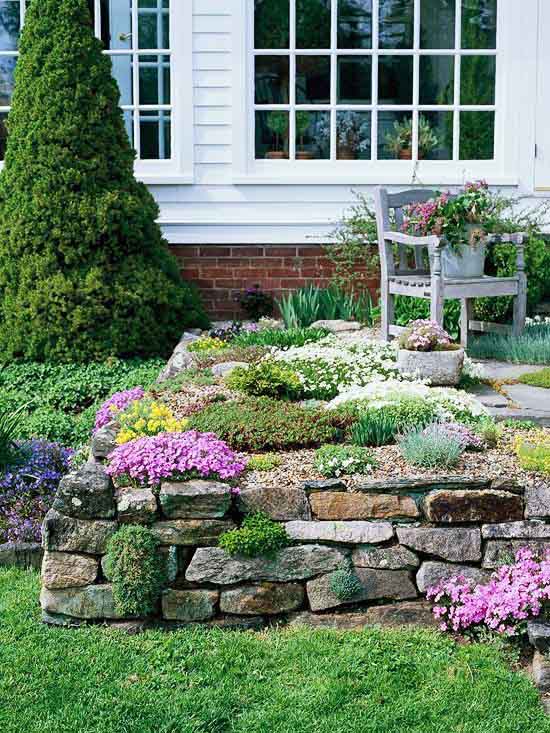
The variously planted dry wall right next to the house also forms a kind of terrace, on which flowers in all forms literally settled. A stone trough and a wooden chair with a galvanized bucket are an extraordinary opportunity to add another dimension to a dry wall. Miniature irises and phloxes, dianthuses, white-flowered iberis, yellow alyssum and aurinia saxatilis and various species of houseleeks were used for planting here.
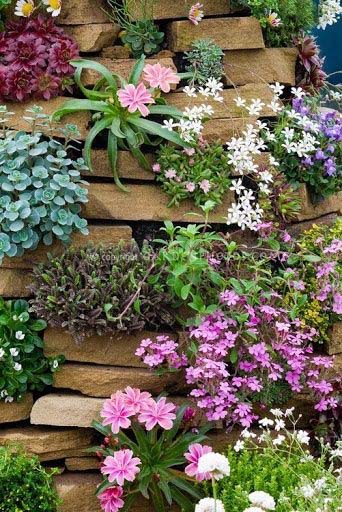
Here we again meet the exemplary planting of a dry wall.
There are Lewisias with pink flowers, Kenilworth Ivy with blue-violet flowers, Sea thrift with white flowers, pink-flowering Phlox Douglasii and other alpines. We meet a very similar planting of a dry wall in the next picture.
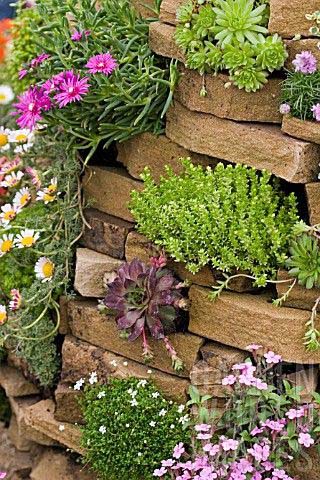
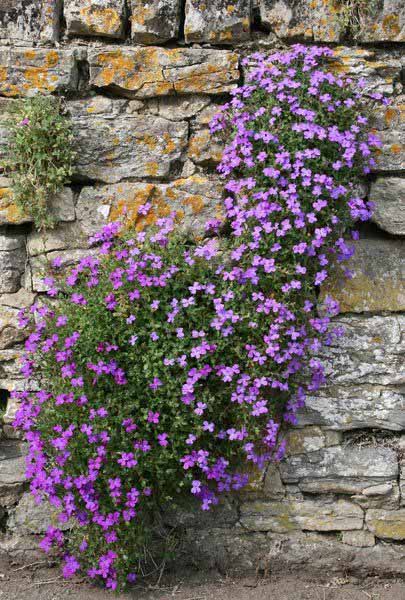
Aubrieta has a large number of different varieties. It is one of the most popular rock plants, which is also ideal for planting on dry walls, as it is growing greatly in all directions. Their fine but dense roots can also strengthen the construction of the wall, so thanks to aubrietties they do not disintegrate. If they have calcium-rich soil that is well permeable, they will do great. In addition to purple flowers, these pillow-like plants can also offer you pink, white and also dark ochre flowers, which you can find under the name Aubrieta ‘Red Carpet’.

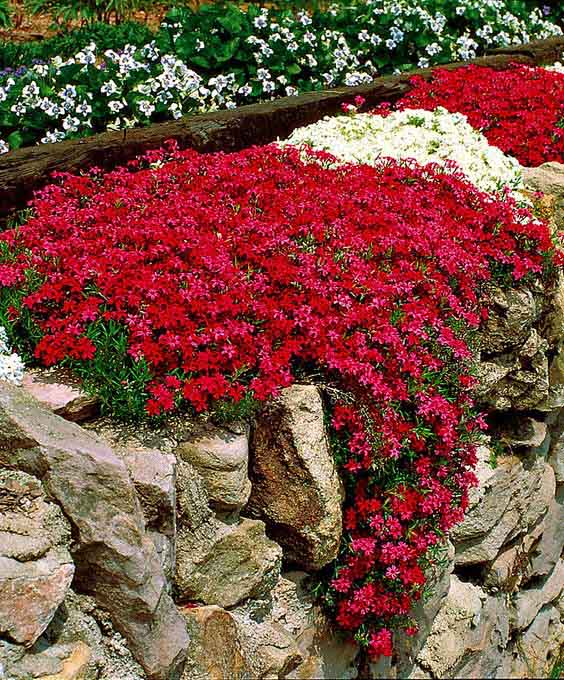
Mossy or carpet phloxies are a welcome addition to every rock and dry wall for their variety of colors. Phlox subbulata on the picture has a bright red color, but is also available in lilac, purple, white and pink. Blue or blue-violet varieties have the designation Phlox subbulata “Emerald Cushion Blue”.
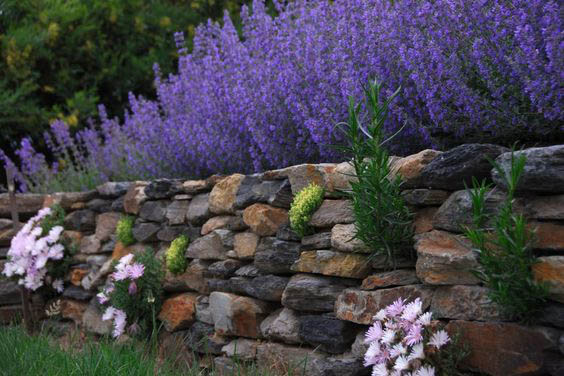
This wall is relatively recently founded, but it does not change the fact that it also looks very interesting. Its most distinctive element is, of course, the sage (Salvia officinalis) planted in the upper row. It grows well, smells beautiful, does not suffer from diseases, is not difficult to maintain and can decorate even after finished flowering with its gray-blue leaves. In addition, you can use it as a medicine.
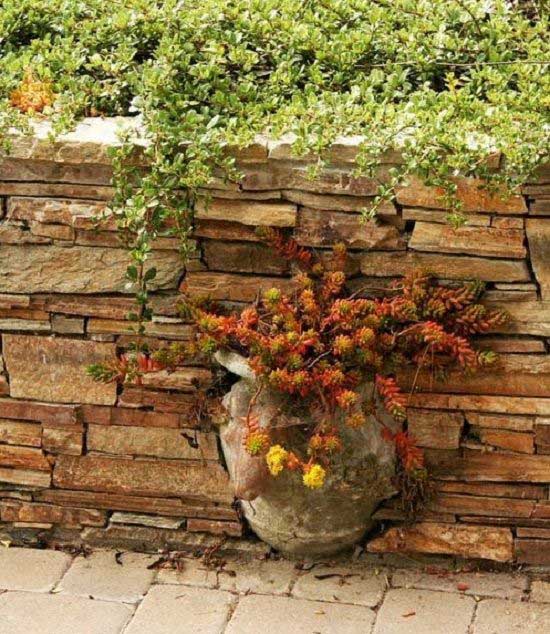
An unconventional and interesting element of your dry wall can be, for example, the during construction built-in amphora. The upper part of the wall is planted with a Cotoneaster and there are houseleeks planted in the amphora. Their typical planting place are roofs, where they are supposed to protect the house from lightning and storms, but maybe, planted in this way, will work the same.
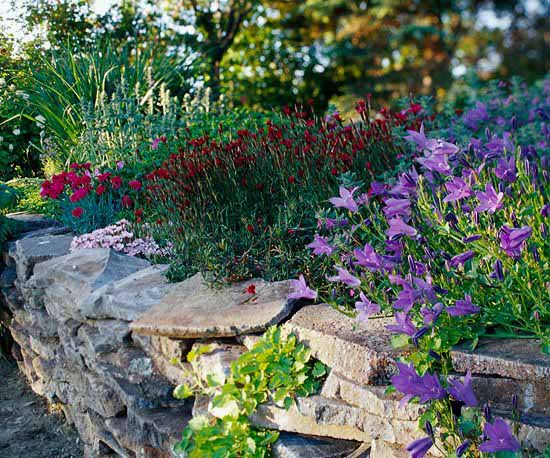
Dianthuses, campanules and higher Stachys bizantina planted in the background are good companions when planting in a dry wall. The permeable soil suits them all equally well.
Text: Zuzana Bohdalová
Source: moje-bydleni.com
